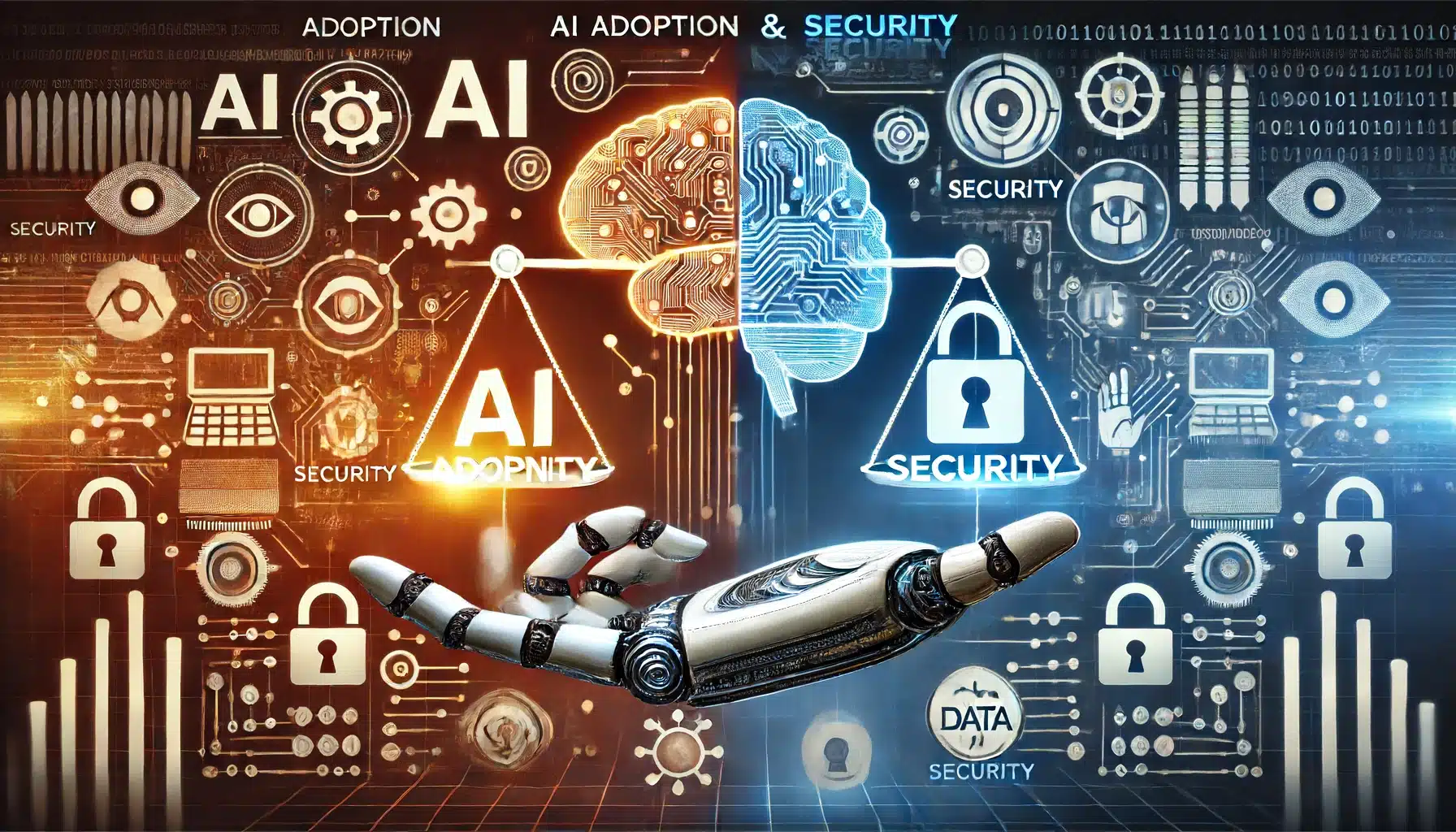Introduction
Artificial Intelligence (AI) offers immense potential for innovation and efficiency across various sectors. However, integrating AI into business processes comes with significant security and privacy concerns. This guide provides a comprehensive overview of how to adopt AI technologies securely, ensuring that data protection and privacy are not compromised.
Understanding the Security Risks of AI
Data Privacy Concerns
AI systems require large amounts of data to function effectively, often including sensitive personal information. Protecting this data from unauthorized access and breaches is crucial to maintain privacy.
- Data Collection: AI systems rely on collecting vast amounts of data. This includes personal information, which raises concerns about how this data is stored and used.
- Data Processing: The way AI processes data can expose it to risks if not properly managed.
- Data Sharing: AI often requires data to be shared across systems or with third-party services, increasing the risk of unauthorized access.
Algorithmic Bias and Fairness
AI algorithms can unintentionally perpetuate biases present in training data, leading to unfair outcomes. Ensuring that AI models are fair and unbiased is essential for ethical AI deployment.
- Bias in Data: AI models can inherit biases from the data they are trained on, leading to discriminatory outcomes.
- Fairness in Algorithms: Ensuring algorithms are designed to treat all users fairly is a significant challenge.
- Impact on Decision Making: Biased AI can negatively affect decision-making processes in critical areas like hiring, lending, and law enforcement.
Cybersecurity Threats
AI systems can become targets for cyberattacks, potentially compromising the integrity and security of the data they process. Robust cybersecurity measures are needed to safeguard AI infrastructures.
- Target for Attacks: AI systems, particularly those dealing with sensitive data, are attractive targets for cybercriminals.
- Data Integrity: Attacks on AI systems can lead to data manipulation, affecting the accuracy of AI predictions.
- System Vulnerabilities: AI systems can have vulnerabilities that need to be continuously monitored and patched.
Best Practices for Secure AI Adoption
Conduct Comprehensive Risk Assessments
Before implementing AI technologies, conduct thorough risk assessments to identify potential vulnerabilities and their impact on security and privacy.
- Identify Vulnerabilities: Assess the entire AI deployment process to identify weak points.
- Impact Analysis: Understand the potential impact of each vulnerability on your organization.
- Risk Mitigation Strategies: Develop strategies to mitigate identified risks, such as encryption and access controls.
Implement Strong Data Governance Policies
Establish clear data governance policies that define how data is collected, stored, processed, and shared. Ensure compliance with data protection regulations such as GDPR and CCPA.
- Data Policies: Define policies for data usage, retention, and disposal.
- Regulatory Compliance: Ensure your AI processes comply with relevant data protection regulations.
- Access Controls: Implement strict access controls to limit who can access and modify data.
Ensure Transparency and Explainability
AI models should be transparent and explainable to build trust with users. Implement techniques to make AI decisions understandable and provide clear explanations for outcomes.
- Model Explainability: Use methods like SHAP or LIME to explain AI decisions.
- User Trust: Providing explanations helps build trust with users who interact with AI systems.
- Regulatory Requirements: Some regulations require transparency in AI decision-making processes.
Employ Robust Encryption Techniques
Use advanced encryption methods to protect data at rest and in transit. Encryption ensures that even if data is intercepted, it remains unreadable to unauthorized parties.
- Data Encryption: Encrypt data both in storage and during transmission.
- Key Management: Implement strong key management practices to protect encryption keys.
- End-to-End Security: Ensure end-to-end encryption in all AI-related data processes.
Regularly Update and Patch AI Systems
Keep AI systems and their underlying software up to date with the latest security patches. Regular updates help mitigate vulnerabilities that cybercriminals could exploit.
- Regular Updates: Implement a schedule for regular updates and patches.
- Vulnerability Management: Continuously monitor for new vulnerabilities and address them promptly.
- Testing: Regularly test AI systems for security weaknesses and patch them accordingly.
Strategies for Balancing AI Adoption and Security
Integrate Security into AI Development Lifecycle
Incorporate security measures throughout the AI development lifecycle, from design and development to deployment and maintenance. Security should be a fundamental consideration at every stage.
- Secure Design: Embed security considerations into the design phase of AI development.
- Development Practices: Follow secure coding practices to minimize vulnerabilities.
- Ongoing Maintenance: Regularly update and maintain AI systems to address emerging security threats.
Train Employees on AI Security
Provide training to employees on the security implications of AI technologies. Ensure they understand how to use AI tools securely and recognize potential security threats.
- Security Training: Conduct regular training sessions on AI security best practices.
- Awareness Programs: Implement awareness programs to highlight common security threats.
- Role-Based Training: Tailor training to the specific roles and responsibilities of employees.
Monitor AI Systems Continuously
Implement continuous monitoring of AI systems to detect and respond to security incidents promptly. Use automated tools to identify anomalies and potential breaches in real-time.
- Automated Monitoring: Use automated tools to monitor AI systems continuously.
- Anomaly Detection: Implement systems to detect unusual activities or anomalies.
- Incident Response: Develop a robust incident response plan to address security breaches.
Collaborate with Security Experts
Work with cybersecurity experts to develop and implement effective security strategies for AI adoption. Their expertise can help identify and mitigate risks that might not be immediately apparent.
- Expert Consultation: Seek advice from cybersecurity experts on securing AI systems.
- Security Audits: Conduct regular security audits to identify and address vulnerabilities.
- Collaboration: Foster a collaborative environment where security and AI teams work together.
Case Studies of Secure AI Adoption
Financial Sector
Financial institutions are increasingly using AI for fraud detection and customer service. By implementing strong encryption and continuous monitoring, they can protect sensitive financial data while leveraging AI’s benefits.
- Fraud Detection: AI helps in identifying fraudulent activities in real-time.
- Customer Service: AI-powered chatbots enhance customer service while ensuring data security.
- Data Encryption: Strong encryption techniques protect sensitive financial data.
Healthcare Industry
AI is transforming healthcare with applications like predictive diagnostics and personalized treatment plans. Ensuring patient data privacy and compliance with health regulations is paramount for secure AI adoption in this sector.
- Predictive Diagnostics: AI helps in predicting health issues before they become severe.
- Personalized Treatment: AI provides personalized treatment plans based on patient data.
- Compliance: Ensuring compliance with health regulations like HIPAA is crucial.
Retail Industry
Retailers use AI for personalized recommendations and inventory management. Protecting customer data and preventing cyberattacks on AI systems are critical for maintaining consumer trust.
- Personalized Recommendations: AI enhances customer experience through personalized product recommendations.
- Inventory Management: AI optimizes inventory management, reducing costs and waste.
- Data Security: Protecting customer data from breaches is essential for maintaining trust.
Future Trends in AI Security
Advancements in AI Explainability
Future AI models will likely feature enhanced explainability, making it easier to understand how AI decisions are made. This transparency will help address ethical concerns and build user trust.
- Explainable AI: Techniques to make AI decision-making processes more transparent.
- Ethical AI: Addressing ethical concerns related to AI decisions.
- User Trust: Building trust by making AI more understandable to users.
Development of AI-Specific Security Tools
New security tools tailored for AI systems will emerge, offering specialized protection against unique threats to AI infrastructures.
- AI Security Tools: Development of tools specifically designed to secure AI systems.
- Threat Protection: Addressing unique threats posed to AI infrastructures.
- Continuous Improvement: Ongoing development and improvement of AI security tools.
Increased Focus on Ethical AI
As AI continues to evolve, there will be a greater emphasis on developing ethical AI frameworks that prioritize fairness, accountability, and transparency.
- Ethical Frameworks: Development of frameworks to ensure ethical AI use.
- Fairness and Accountability: Ensuring AI systems are fair and accountable.
- Transparency: Making AI systems transparent to build trust with users.
Conclusion
Adopting AI technologies securely is essential for harnessing### SEO Meta-title: Adopting AI Without Sacrificing Security: Best Practices and Strategies


